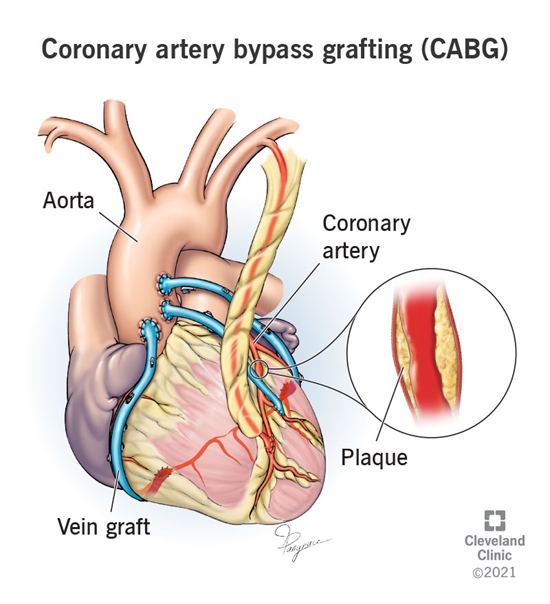تأثیر بازسازی عروق چندگانه بر حوادث ناگوار عمده قلبی عروقی بلندمدت پس از بایپس عروق کرونر در ۲۳.۷۹۸ بیمار
این مطالعه به بررسی رابطه بین دو روش جراحی قلب، یکی با استفاده از چند شریان (MAG) و دیگری با یک شریان (SAG)، و تأثیر آنها بر مرگومیر و مشکلات عمده قلبی و مغزی پرداخته است. هدف اصلی این مطالعه این بود که بفهمد آیا استفاده از چند شریان به جای یک شریان در عمل جراحی قلب، به کاهش مرگومیر و مشکلات قلبی و مغزی کمک میکند یا خیر و این موضوع در بین گروههای مختلف بیماران از یک کشور مورد بررسی قرار گرفت.

روشها: این مطالعه شامل ۲۳،۷۹۸ بیمار بود که تحت عمل جراحی قلب قرار گرفته بودند. برای اینکه دو گروه بیمارانی که جراحی MAG و SAG را انجام داده بودند، قابل مقایسه باشند، از یک روش آماری خاص استفاده شد. سپس ارتباط بین نوع جراحی و نتایج آن با استفاده از مدلهای آماری بررسی شد، به خصوص در گروههایی مانند افراد جوانتر، مردان، و کسانی که عوامل خطر بیماری قلبی کمتری داشتند. نتایج این مطالعه نشان داد ۷۳.۹٪ بیماران مرد و میانگین سنی آنها ۶۵ سال بود. ۹۸۶ نفر از بیماران (۴.۱٪) از روش چند شریان (MAG) استفاده کرده بودند. نتایج نشان داد که در مقایسه با گروه SAG، بیمارانی که از روش MAG استفاده کرده بودند، میزان مرگومیر و مشکلات قلبی و مغزی کمتری داشتند. اما وقتی نتایج دقیقتر بررسی شد و تفاوتهای دیگر بین بیماران در نظر گرفته شد، این ارتباط ضعیفتر شد و مشخص شد که این تفاوت خیلی چشمگیر نیست. با این حال، در برخی گروههای خاص مانند مردان و افراد جوانتر، روش MAG همچنان به کاهش مشکلات قلبی و مغزی کمک کرده بود.
به طور کلی، استفاده از چند شریان به جای یک شریان در جراحی قلب برای همه بیماران نتایج بهتری نداشت. اما در برخی گروههای خاص بیماران، ممکن است این روش بهبودهایی را به همراه داشته باشد و برای درک بهتر این موضوع، نیاز به تحقیقات بیشتر است.
Impact of Multiarterial Revascularization on Long-term Major Adverse Cardiovascular Events After Coronary Bypass in 23,798 Patients
Abstract
Background: This study evaluated the association between bypass grafting with multiarterial grafts (MAG) and single arterial grafts (SAG) and all-cause mortality and major adverse cardiovascular and cerebrovascular events (MACCE), overall and across different patient subgroups from a Middle Eastern nation.
Methods: This single-center retrospective cohort study included 23,798 patients. MAG and SAG groups were balanced using inverse probability weighting (IPW). Associations between MAG and outcomes were assessed using Cox regression. A series of covariate-adjusted Cox models were conducted to evaluate the effect of MAG on outcomes at different levels of independent variables, including age, sex, and cardiovascular risk factors.
Results: In the study population (73.9% were men, 65.11 ± 9.94 years), 986 patients (4.1%) underwent MAG. Compared with the SAG group, MAG had lower crude mortality (14.1% vs 21.6%) and MACCE (28.8% vs 34.7%) rates during a median follow-up of 9.23 years (quartile 1-quartile 3, 9.13-9.33 years). Although MAG was significantly associated with reduced risk of study outcomes at the univariate level, these associations disappeared after matching (all-cause mortality (IPW hazard ratio, 0.90; 95% CI, 0.67-1.22) and MACCEs (IPW hazard ratio, 0.94; 95% CI, 0.76-1.15). However, covariate-adjusted models indicated that MAG was associated with a significantly reduced risk of adverse events, particularly MACCEs, in men, younger patients, and those without risk factors.
Conclusions: MAG was not associated with improved postsurgery outcomes among the total coronary artery bypass graft population. Our findings, however, should be interpreted in the context of a relatively low total institutional MAG burden. Choosing a second arterial conduit over saphenous vein grafts in specific patient subgroups might be reasonable. This hypothesis-generating finding should be investigated in future clinical trials in these patients.
Copyright © 2024 The Society of Thoracic Surgeons. Published by Elsevier Inc. All rights reserved


.png)
.png)
ارسال نظر